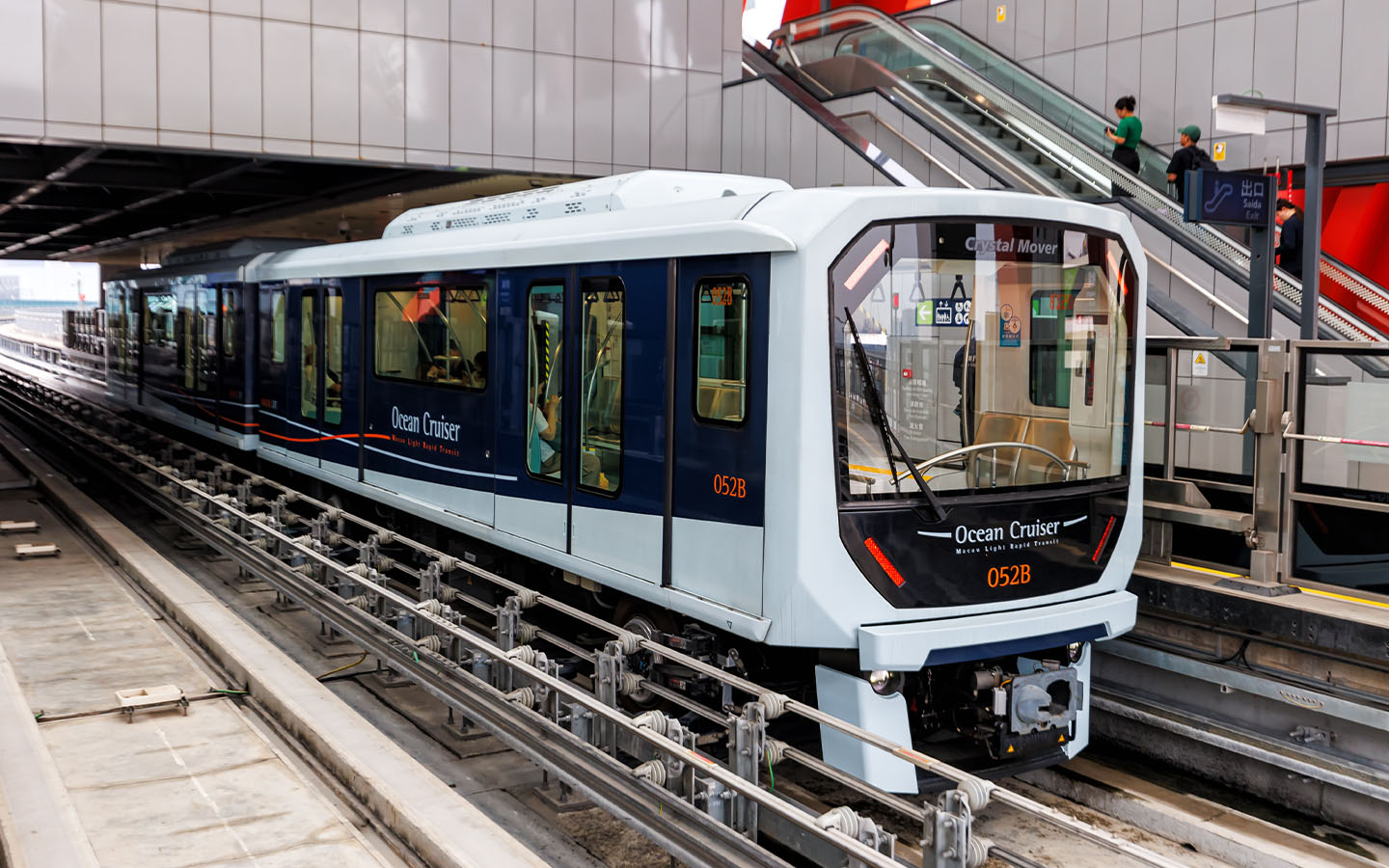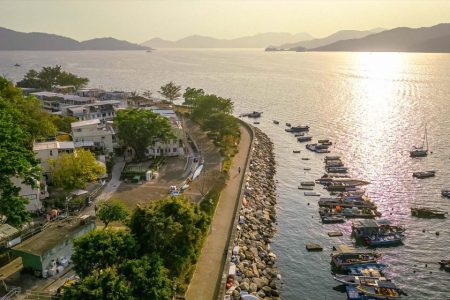In years past, getting around Macao on public transport meant taking the bus, hotel shuttle, taxi or – if you go back far enough – rickshaw. This all changed with the introduction of the Light Rail Transit (LRT) system in 2018.
As the city’s inaugural railway system, the LRT has greatly enhanced the overall public transit network by offering residents and visitors a seamless and affordable transport option that is neither hampered by overcrowding nor traffic snarls.
It makes you wonder why more people don’t use it. Daily passenger numbers slumped to an average of just 11,600 in June, according to data supplied by the train operator – the third consecutive monthly decline. Between February 2020 and December 2023, the number never exceeded 10,000.
Is the gleaming, spotlessly clean LRT really that bad?
[See more: What’s next for Macao’s LRT]
Consisting of 12 stations that are connected by a track running 12.5 kilometres the LRT’s main route, the Taipa Line, allows for travel to key destinations such as A-Ma Temple, Taipa Village and the airport.
While the LRT network is currently not as expansive as the public bus service, it is continuing to develop, with additional lines in Seac Pai Van and Hengqin due to open later this year. The more ambitious East Line is also scheduled for completion by 2028, allowing passengers to travel to the as yet unnamed reclaimed land parcel, New Urban Zone A, and to Gongbei Port.
To learn how to use Macao’s LRT like a pro, read this guide, which covers all the essentials, including the fares and the attractions that the LRT can take you to. You never know – you might even like it.
How do I pay on Macao’s LRT train system?
There are three options: single journey ticket, LRT card and Macau Pass.
If you are staying in Macao for at least several days and intend to use the LRT system multiple times, you are advised to pay using either an LRT card or a Macau Pass, as they are the most convenient and cheapest option. In contrast, the single-journey ticket requires you to first purchase a token through a ticket vending machine or the customer service centre before passing through the station gates.
[See more: This is how you catch a public bus in Macao]
As well, those who pay for their trip through the contactless cards enjoy concessionary single journey ticket prices, which are half the price of a single journey ticket.
Where can I get an LRT Card or Macau Pass?
LRT cards can be purchased via the ticket vending machines or the customer service centre located in each station, with cash, credit card and electronic payment options available.
You can choose from either an adult or concessionary LRT card. Each card comes with a 30 pataca service fee on top of the initial store value, which starts from 10 patacas.
[See more: How to get to Macao’s main attractions from the Outer Harbour Ferry Terminal by bus]
Macau Pass is another contactless card option and offers more flexibility than the LRT card, since it can be used for payment on buses as well as many restaurants and stores. These contactless cards are available at local convenience stores such as 7-Eleven, Circle-K, as well as supermarket chains including Sunsco and Royal. They can also be found in the three Macau Pass customer service centres and the self-service vending machines located around the city.
Purchasing a Macau Pass costs 130 patacas in total, with 100 patacas going towards the initial balance and 30 patacas being charged as a service fee.
Where can I get a single journey ticket for the LRT?
There are two types of single journey tickets, namely adult and concessionary. Both come in the form of a plastic token. Adult tickets are blue, concessionary tickets are green.
[See more: Six apps you need for your next trip to Macao]
The tokens can be purchased with cash or digital payment via the vending machines or customer service centre in each station.
How much does it cost to travel by LRT?
The LRT fare is calculated based on the number of stations you travel per journey and the type of ticket that you employ.
Those who board the light rail with a Macau Pass (adult), LRT card (adult) or concessionary single ticket journey ticket can expect to pay 3 patacas for the first three stations. Each three subsequent stations travelled adds an extra 1 pataca. On the current system you’ll never have to pay more than 6 patacas using this method.
[See more: Here’s how to get to some of the Greater Bay Area cities from Macao]
The fee for a single journey adult ticket is double that of the three above-mentioned ticket types, with the prices ranging between 6 patacas and 12 patacas.
Attractions and hotels you can access using the LRT
Barra Station: Old district of Macao
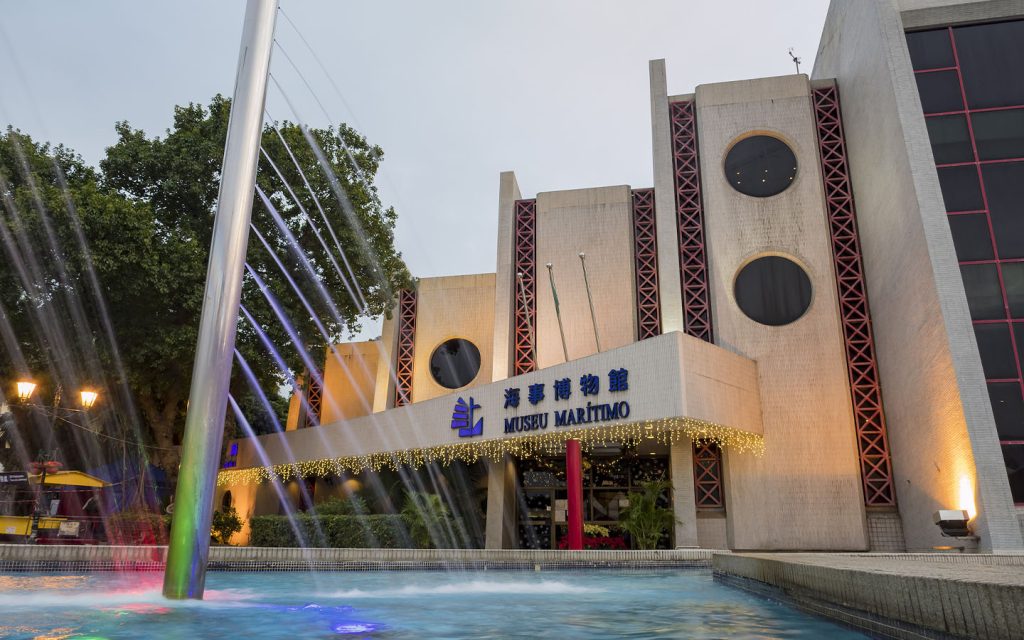
Barra Station is currently the only section of the LRT that is linked to the Macao Peninsula and lies within walking distance from some of the main tourist attractions in the old city. Among these is the famous A-Ma temple, Macao’s oldest temple with a history dating back as far as 1488. The temple can be accessed via Exit A of the station.
Across from A-Ma Temple, visitors can also learn about Macao’s rich seafaring history at the Maritime Museum, which is free of charge and features a small aquarium.
Navy Yard No. 1 and No. 2 are located only a few minutes walk away from the temple and museum and are also worth visiting, as the government periodically organises different types of exhibitions in the area. You can refuel at a number of food trucks in the yards.
Should you feel the need to sit down and have a proper meal, the restaurants in the area also have you covered. A Lorcha, a well-respected Macanese restaurant that has a history of 35 years, is a good option. The same goes for Restaurante Litoral Macau (which has a branch in Taipa as well). If you’re on a budget, you can’t go wrong with Ma Kok Meng Kei, a local restaurant that often has many mainland visitors lining up to try their equally delicious and affordable Macanese and café dishes.
[See more: The Taipa-Barra LRT extension has opened]
After exploring A-Ma Temple and the surrounding sites, you can easily continue your journey in the peninsula by returning to the Barra LRT station and boarding one of the buses at the bus terminal (M3 Centro Modal de Transportes da Barra) on basement floor 1.
To get to Avenida de Almeida Ribeiro (commonly known as San Ma Lo), the main thoroughfare of the Macao, where many of the key historic hotspots are located, take the number 5, 10 or 18 bus and alight at the the fifth station (M135/2 – Almeida Ribeiro/Tai Fung). Alternatively, you can board the number 11 and hop off at the fifth station Almeida Ribeiro/Rua Camilo Pessanha (M143).
To travel to Macao Tower, where you can shop, dine and enjoy a view of the city from a high altitude, take the number 60 bus and disembark at the first station (M177 Torre de Macau).
Jockey Club Station: Buddha Shrine and Roosevelt Macau
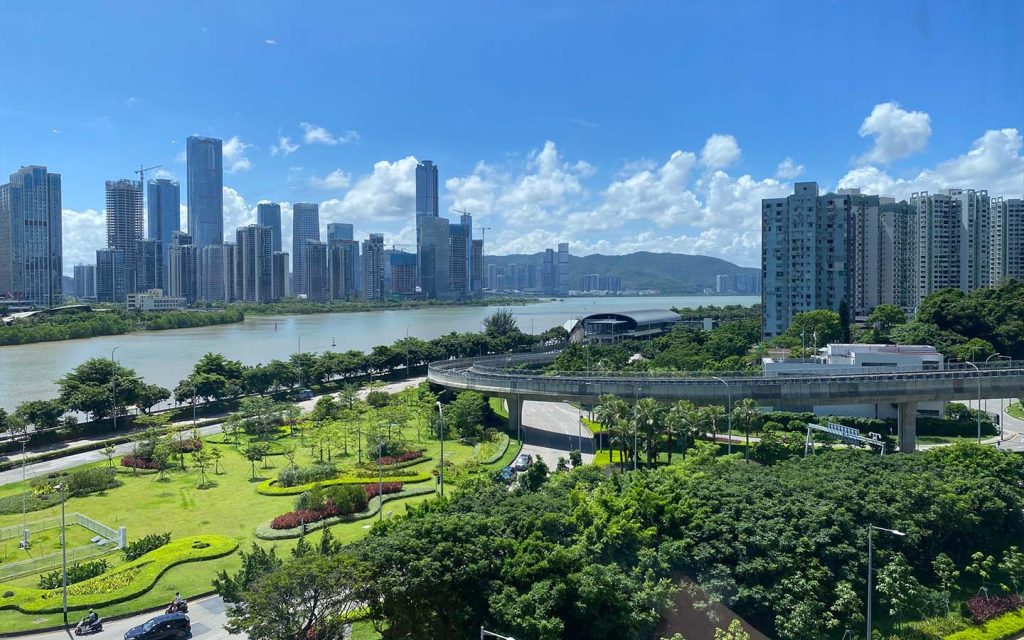
Visitors won’t have very much reason to disembark from the Jockey Club Station, as there are not very many tourist attractions in the area, especially following the permanent closure of the Macao Jockey Club in April 2024. But The Macau Roosevelt hotel is easily accessible via Exit B, while a four-faced Buddha Shrine can be found through Exit A.
[See more: Macao’s horse racing era draws to a close as the curtain falls on the Macau Jockey Club]
If you don’t mind walking roughly a kilometre along Avenida Kwong Tung from Exit A, you’ll come to Taipa’s fanciest shopping centre, Nova Mall, as well as Taipa Central Park, which features a multitude of facilities, including a large swimming pool, library and outdoor fitness equipment.
Stadium Station: Grandview Hotel Macau and Grand Dragon Hotel
Stadium Station doesn’t offer much in the way of attractions, although those who are staying in the Grandview Hotel Macau and Grand Dragon Hotel should definitely take note of the station. Both properties can be accessed from Exit B.
Pai Kok Station: Taipa Village and Galaxy
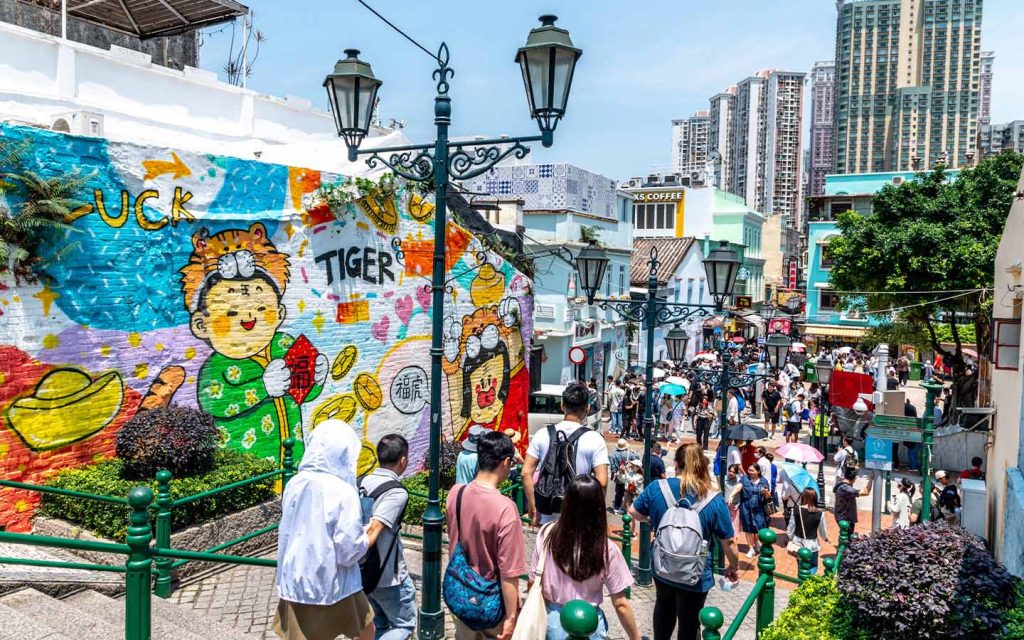
Taipa Village, one of the main tourist spots in Taipa, is only about 11 minutes away by foot from Exit A of Pai Kok Station. The star attraction in the area is undoubtedly Rua do Cunha, a 136-metre pedestrian street, which is populated with eateries and souvenir shops that sell Macao’s renowned almond cookies, egg tarts, peanut candies and beef jerky.
Visitors will find a diverse selection of restaurants in the village, including O Santos, which has been proudly serving Southern Portuguese food since 1989, and Portugália, which was established in 2015 and has found a strong following among Macao’s Portuguese community.
[See more: How to do Rua do Cunha like a pro]
Many heritage sites are situated in the area, with some notable ones being the Taipa Houses Museum, Our Lady of Carmo Church and Pak Tai Temple.
Right across from Taipa Village is Galaxy Macau, which is accessible via Exit B of Pai Kok Station. Galaxy currently houses seven hotels (an eighth, the Capella, is slated to open in 2025), with the ones closest to the LRT station being Galaxy Hotel, Hotel Okura and Banyan Tree Macau.
As with the other integrated resorts, Galaxy offers a wide range of entertainment options ranging from gambling to art exhibitions. The dining options are equally varied, encompassing fast food, Michelin-starred restaurants and everything in between.
Cotai West Station: The Venetian, Galaxy Convention Centre, Galaxy Arena

The Venetian and The Parisian are within walking distance from Cotai West Station via Exit A. Much like the other casino hotels along the Cotai Strip, the two integrated resorts have a range of offerings in terms of restaurants, shops and entertainment.
For those searching for accommodation near Cotai West, look no further than the Four Seasons Hotel, which can be reached by foot through Exit A. Other nearby options include The Ritz-Carlton Macau, JW Marriott Macau and Andaz Macau, which are part of Galaxy, and can be found by coming out of Exit B.
[See more: How to get the bus from Macao to Hong Kong Airport (and vice versa)]
Exit B can also take you to the Galaxy Convention Centre and Galaxy Arena, which regularly host events and performances, as well as the Cotai Ecological Conservation Zone, should you feel the need to immerse yourself in nature.
Lotus Checkpoint Station: Studio City
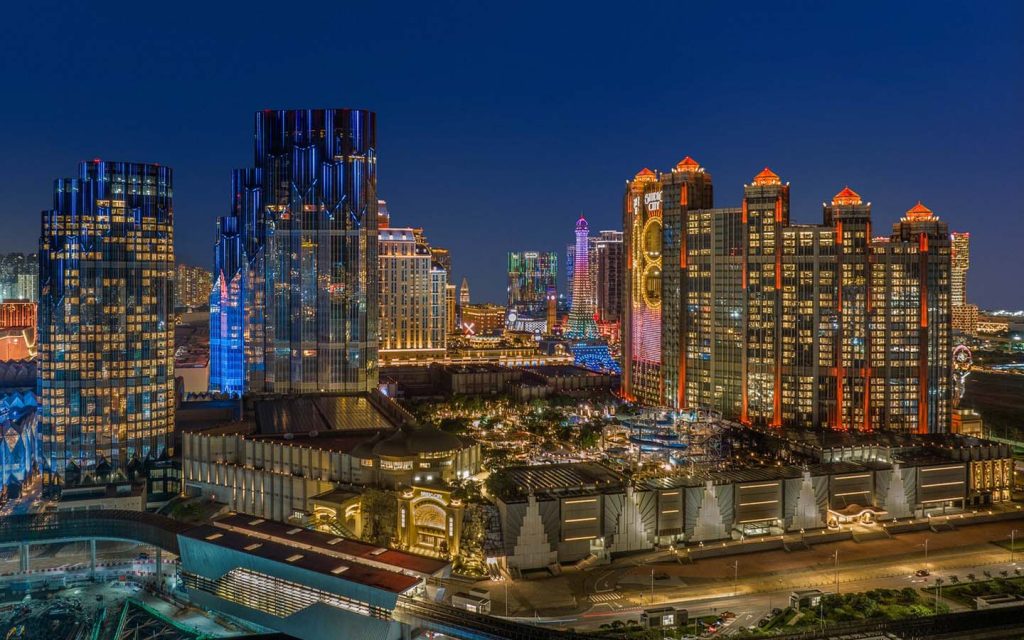
Exit A of the Lotus Checkpoint Station gives you direct access to Studio City within minutes after stepping off the train.
Besides casinos, Studio City offers plenty in the way of family-friendly entertainment. Some of the main attractions are the Studio City Water Park, the largest of its venue of its kind in Macao; Legend Heroes Park, a tech-based entertainment area with facilities such as arcade machines, a bowling alley and bumper cars; and Super Fun Zone, an almost 3,000 square metre play area with 5 themed sections.
[See more: Here’s a guide to the hotel and casino shuttle bus services in Macao]
The dining and shopping options are equally impressive, with everything from Chinese to Italian, as well as discount stores to souvenir shops.
Studio City is home to four different hotels – Celebrity Tower, Star Tower, Epic Tower and W Macau. The latter was just voted as one of the most beautiful hotels in 2024 by UNESCO’s Prix Versailles.
Cotai East Station: City of Dreams, MGM Cotai, The Londoner, Wynn Palace
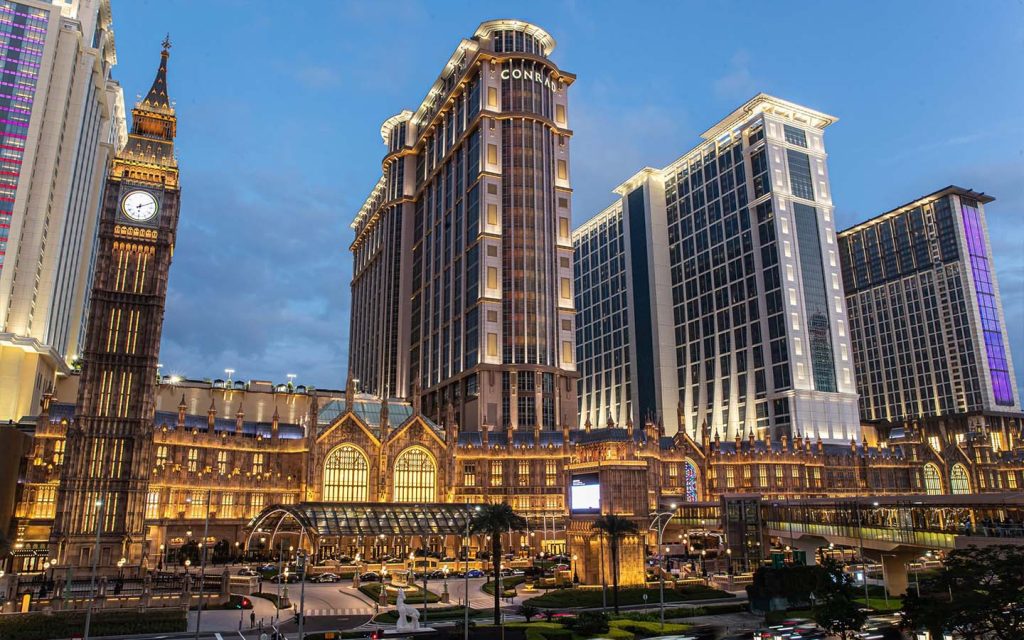
Much like Cotai West, Cotai East is located within walking distance from a number of major Cotai integrated resorts. These include City of Dreams, MGM Cotai and the Londoner Macao, which can all be accessed on foot from Exit A. Wynn Palace, on the other hand, requires a short walk out of Exit B.
[See more: Here are some of the best things to do in Guangzhou]
In terms of hotels, there are quite a few around the station – Grand Hyatt Macau, Morpheus, Nüwa and the Countdown Hotel are all situated in City of Dreams. Meanwhile, the St Regis Macao, Conrad Macao and Sheraton Grand Macao are nearby accommodations that can be found in the Londoner.
